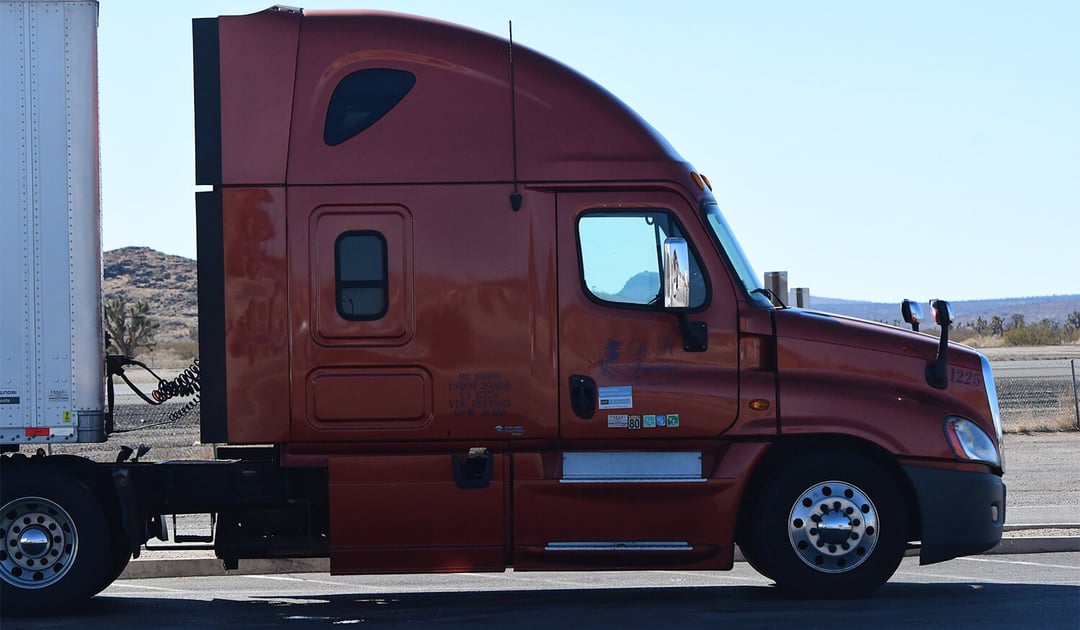
Trucking & Railroad Terms: Defining Headhaul, Backhaul and Deadheading
February 16, 2023 •Kevin Baxter

Trucking and railroad feature a number of unique terms to describe their freight activities that require defining for outsiders. Among those are three related ones - headhaul, backhaul and deadheading. How are they related? All three of these trucking and railroad terms address a version of a journey, but with key variations. Perhaps you can tell by the slight variations in their names. Read on for more specifics on headhaul (or head haul), backhaul (or back haul) and deadheading.
What is headhaul?
Headhaul is a trucking and railroad term that actually has multiple layers. The most basic way of defining headhaul is a load that is "heading" - or being hauled to - its destination. Diving a little deeper, a headhaul in freight market terms also describes the highest revenue generating shipping lane from shipper to receiver. In other words, the headhaul represents the higher rate of any roundtrip origin and destination zip code pairing. A headhaul market has a few particular characteristics:
- Freight carriers have plenty of choices
- Carriers can typically demand a higher price
- The loads are often close to the carrier
- They are often straight-forward, uncomplicated and full loads
- The carrier may deadhead (stay tuned...) into the market to tap into the higher rate optioned freight
That last bullet shows how much carriers love a headhaul. They're willing to go out of their way to benefit from the higher rates and better load options, and they're able to do so because there is a dearth of carriers handling a route that shippers want/need. In addition to sometimes being spelled out with a space, i.e. "head haul," this can also be referred to as fronthaul (front haul), maybe because front and back are more direct opposites than head and back.
What is backhaul?
Backhaul is a trucking and railroad term that serves as a counter to headhaul. Simplistically, it is the return trip after the headhaul load is dropped off. In financial terms, the backhaul is the lower of the rates in a round trip origin and destination pair. A backhaul can occur without a pre-booked roundtrip as well, as long as a load comes back the other way. A backhaul market is the inverse of the headhaul, where carrier supply outpaces shipper demand, so carriers are willing to take loads - usually from shippers other than the one who provided the headhaul - at reduced rates to avoid deadheading (again, stay tuned...). Characteristics of a backhaul market include:
- Carriers have few options to get out of the market
- Increased chance of deadhead miles out to gain access to a market for the next load
- Carriers often take losses on the lane because they are forced to lower pricing to get out of the market
There are plenty of examples of backhaul markets. Florida for much of the year has more freight coming in than going out. The U.S. is also a backhaul market when compared to Mexico, which sends much more freight north than it receives. Another important distinction about a backhaul is, that it may go more in the general direction of the origin rather than directly back, as carriers often cannot afford to be as picky. For instance, if a headhaul takes a load from Dallas to Chicago, a backhaul may go from Chicago to Little Rock. It's not all the way back, but gets the truck or container back near its origin. A carrier considers the destination of the backhaul along with how quickly they can accomplish it as their typical priorities, because getting back to headhaul land without deadheading is the goal. And without further ado, onto the deadhead definition.
What is deadhead or deadheading?
Deadhead or deadheading in freight refers to a scenario carriers would prefer to steer clear of - a truck driving a lengthy distance empty, or at least without carrying freight that's making the carrier money. Beyond the loss of revenue for a carrier, a deadhead is also an environmental negative, as it creates emissions without the added purpose of transporting cargo. And yet another negative involves driver (and road) safety. Empty trailers are not anchored in the same way as full ones, so in any type of a bad weather situation - especially high winds - the trailer can be tough to control, endangering the driver and anyone else on the road. Without passing judgement on Grateful Dead fans, deadheads are to be avoided as much as possible, but they can be hard to avoid in some cases, like:
- When a headhaul market requires the carrier to position an empty truck to transport a load
- When no reasonable backhaul options exist
- When a scheduled load is canceled
Containers can deadhead, too, but when traveling via train with many other full ones, the stakes are not as high. At any rate, deadheading is an undesirable practice for carriers, and one they work hard to minimize.
Want to put your new knowledge into practice with an improved freight strategy? Drop us a line and we'll follow up to discuss your company's unique shipping and logistics needs. For more information about us, or logistics and supply chain issues in general, check out our Freight Guides.
Get Updates
Featured Articles
Categories
- Freight & Shipping Costs (54)
- Freight Broker (60)
- Freight Forwarder (2)
- Intermodal Transportation (184)
- International & Cross Border Logistics (43)
- Logistics & Supply Chain (420)
- Logistics Service Provider (77)
- LTL (39)
- Managed TMS (49)
- News (39)
- Supply Chain Sustainability (12)
- Transportation Management System (37)
- Truckload (122)
- Warehousing & Distribution (50)


